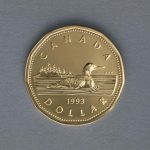NZD/USD edged lower, after the statement of Federal Reserve Chairman, Ben Bernanke and despite positive inflation data released out of New Zealand earlier.
NZD/USD fell to a session low at 0.8323 at 8:38 GMT., losing 0.49% on a daily basis. Support was to be encountered at November 17-th low 0.8335, while resistance was to be found at November 19-th high 0.8392.
The greenback strengthened after the Federal Reserve Chairman Ben Bernanke re-assured that the Fed will continue with its accommodative policy, keeping central banks interest rate near zero for a “considerable time”, well after the stimulus program is expected to be tapered. The program actually is meant to put downward pressure on borrowing costs and consists of monthly purchases of Treasuries and mortgage-backed securities by the Central Bank, which are worth $85 billion. The expectations point that the stimulus program will be reduced to $70 billion monthly at the policy meeting on March 18-th-19-th. A “preponderance of data” would be needed in order to begin removing accommodation, according to bank’s Governor. The benchmark interest rate may remain at low levels “perhaps well after” the rate of unemployment in the country falls below Fed’s objective of 6.5%.
The USD received further support, after the statements of other Fed policymakers, like the Chair-nominee Janet Yellen, who made a statement in front of the Senate Banking Committee on November 14-th, that she will continue with the unprecedented stimulus recovery, until she sees a more robust recovery of the economy. She added that there were signs of economic recovery, but it is too early to cut the stimulus program. The President of the Bank of New York Fed, also supported Ben Bernanke and Janet Yellens vision that the stimulus program should be continued as long as it is needed, saying on November 18-th, that he was “more hopeful” about the economy, but however, showed no indication of changes of bond buying anytime soon.
Meanwhile, earlier today official data out of New Zealand showed that producer price inflation input rose 2.2% in the third quarter, exceeding expectations for a 0.6% uptick, after a 0.6% rise in the three months to June, while producer price inflation output rose 2.4% in the last quarter, more than the expected 1% increase, after a 1% rise in the second quarter.
Investors were expecting to see later today the release of important US economic indicators, like retail sales, the mothly and annual index of the consumer prices and sales of existing houses.
Elsewhere, the Australian dollar was lower against the euro, with EUR/AUD cross advancing 0.37% on a daily basis to trade at 1.4409 at 9:31 GMT. AUD/NZD pair was gaining 0.11% to trade at 1.1285 at 9:33 GMT, while USD/JPY fell to a session low at 99.94 at 2:35 GMT, after which consolidation followed at 100.09, dipping 0.05% for the day.





